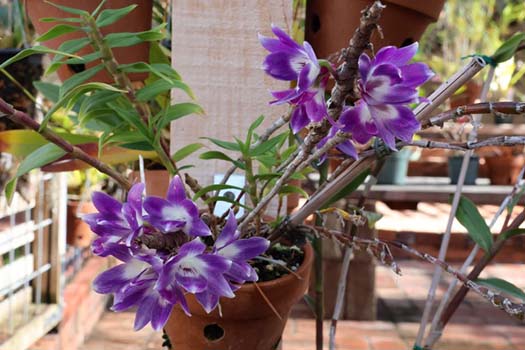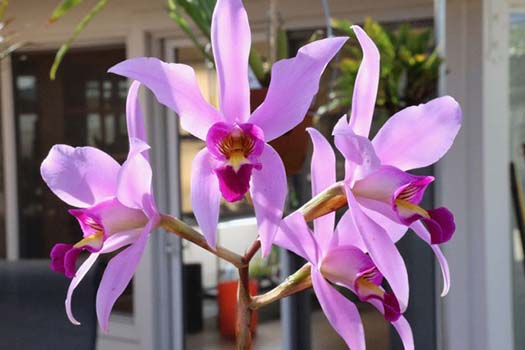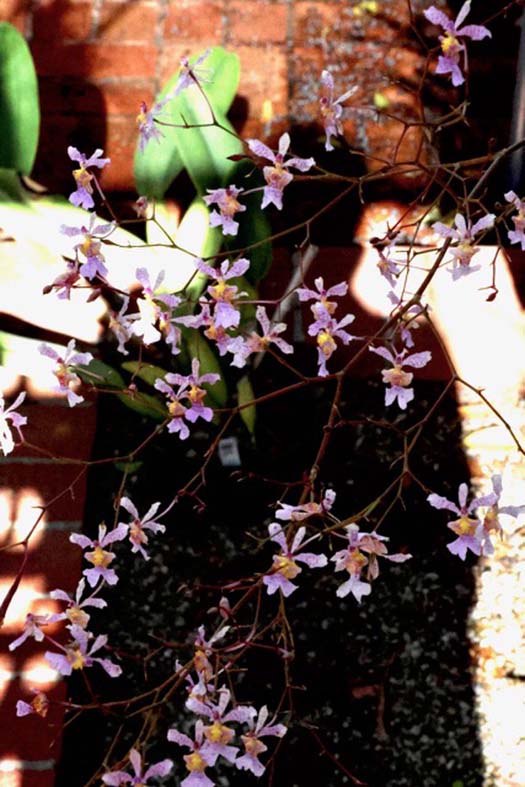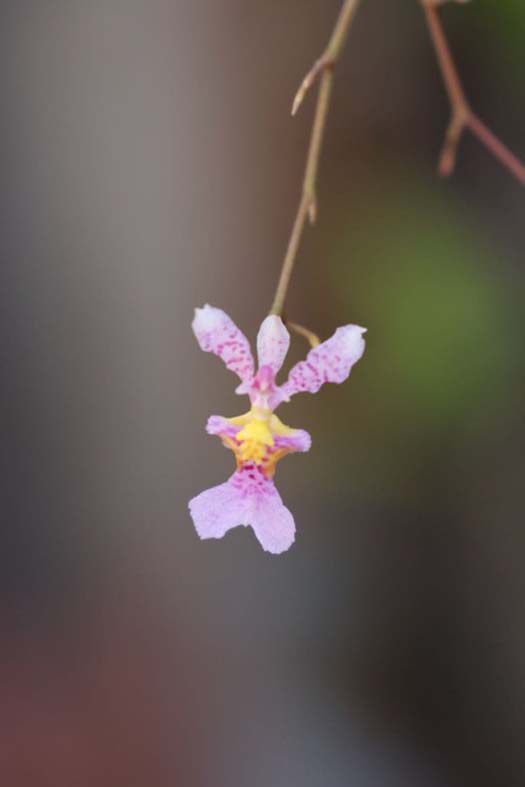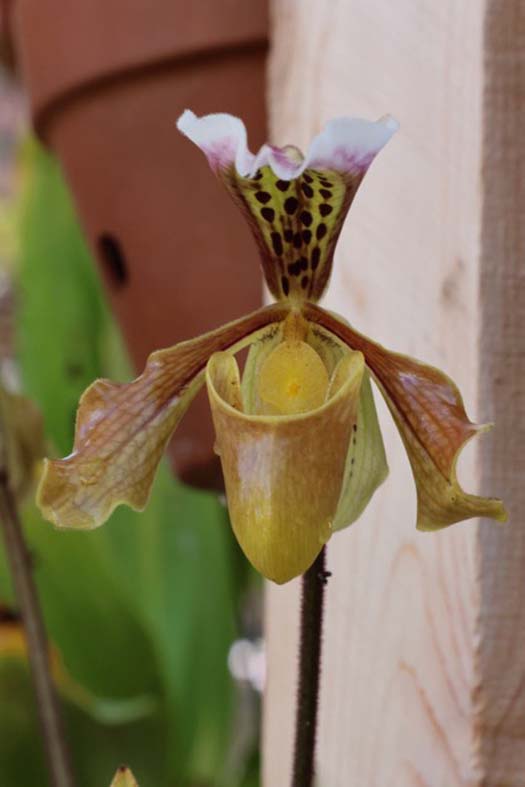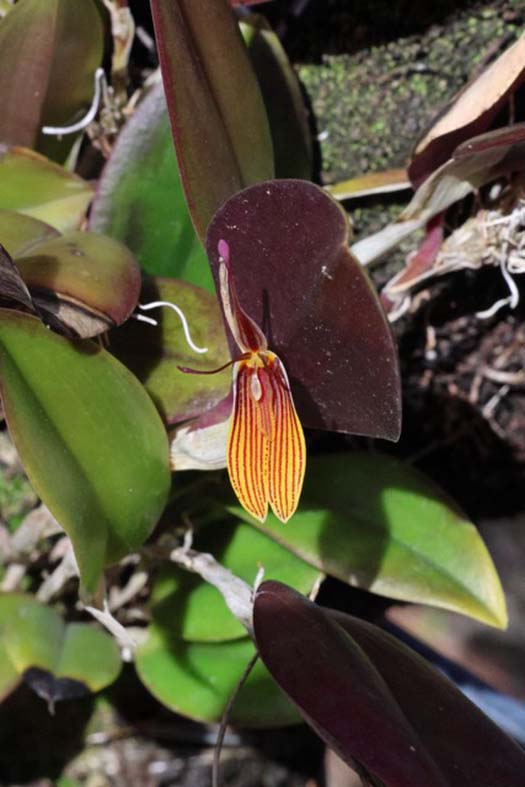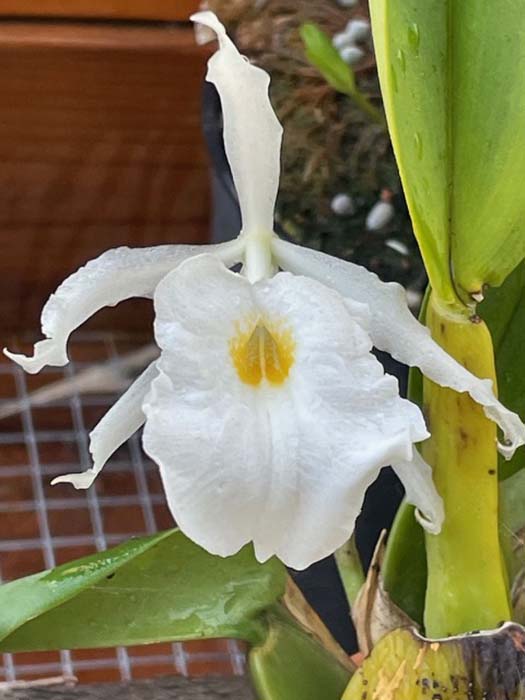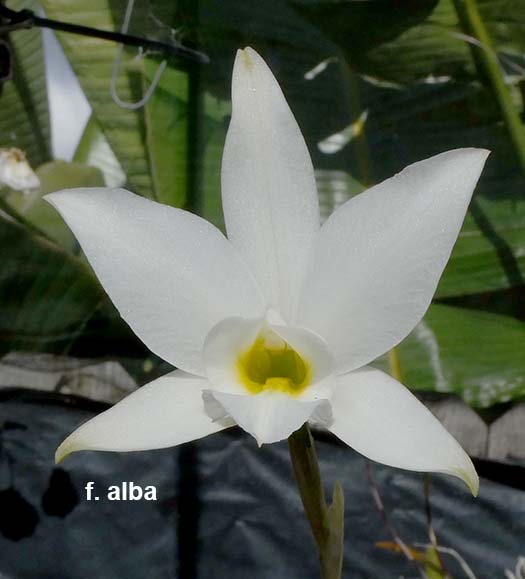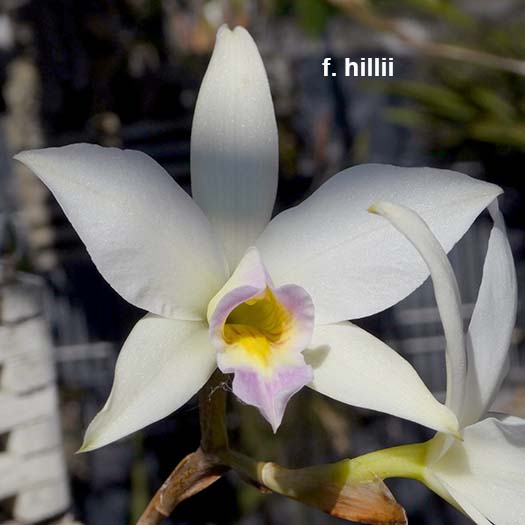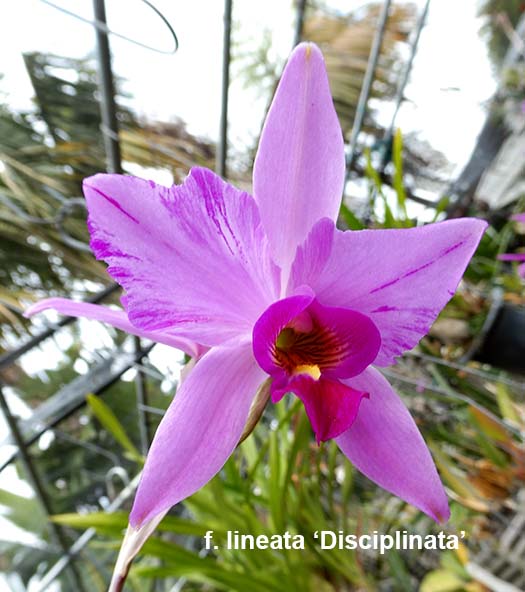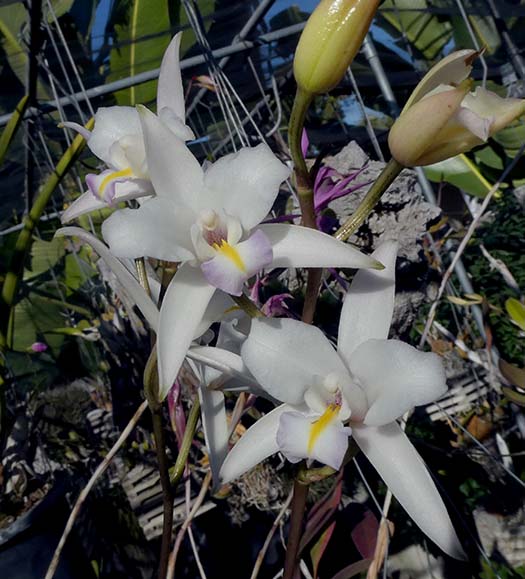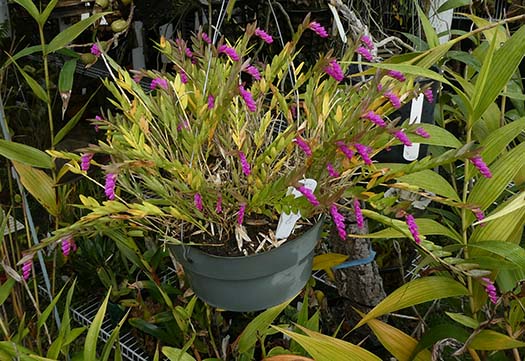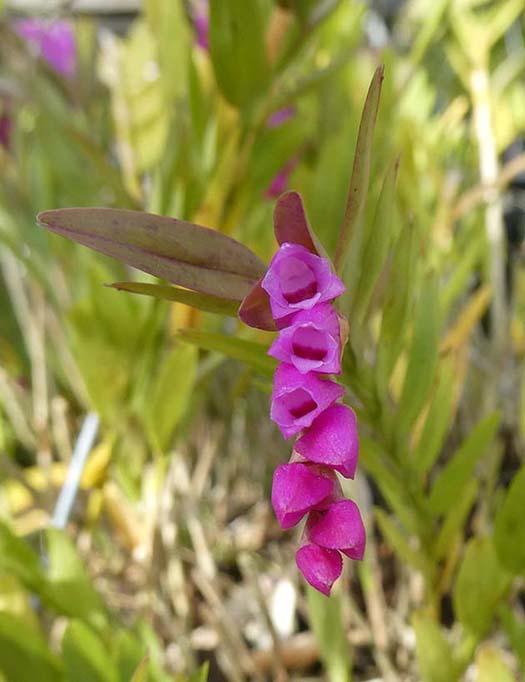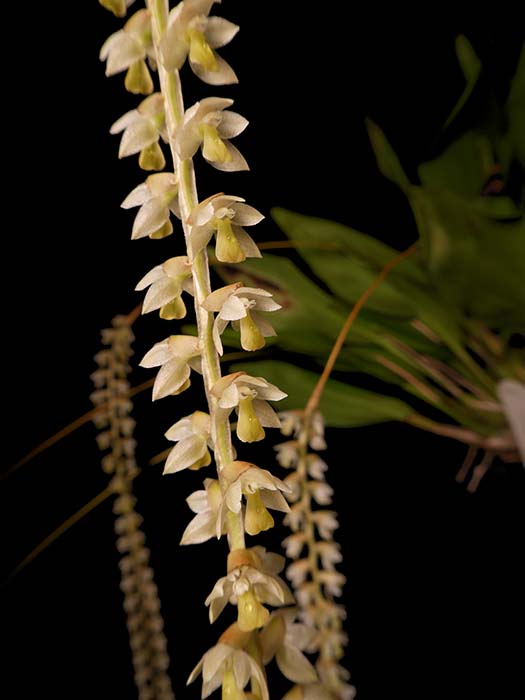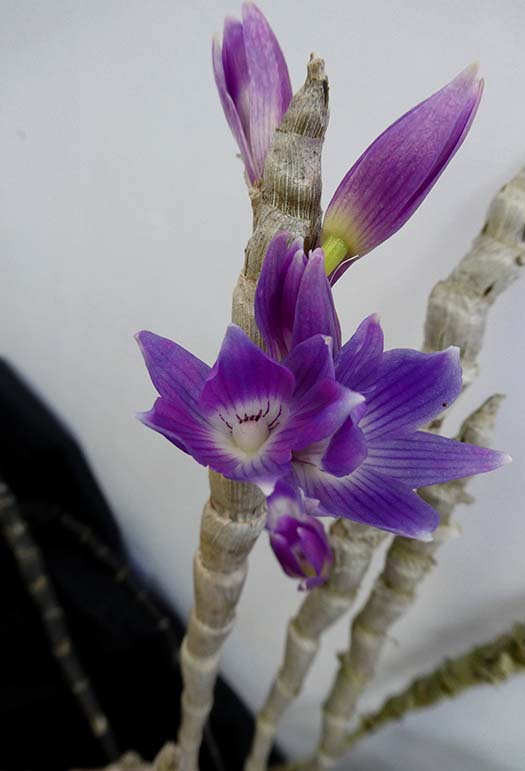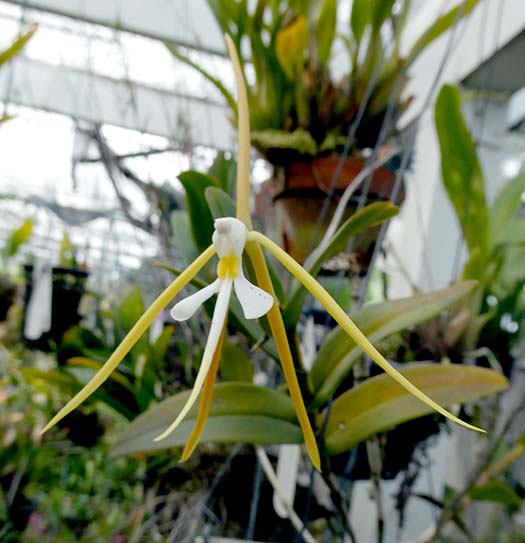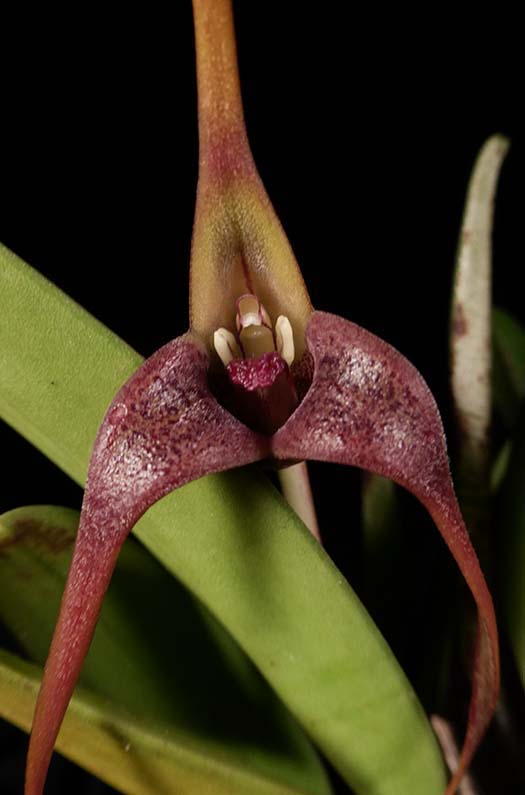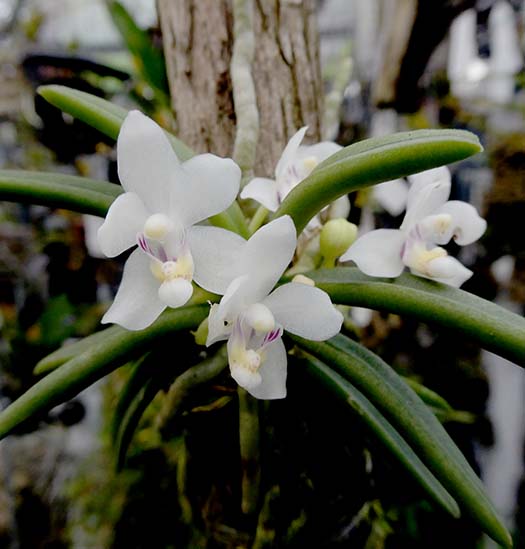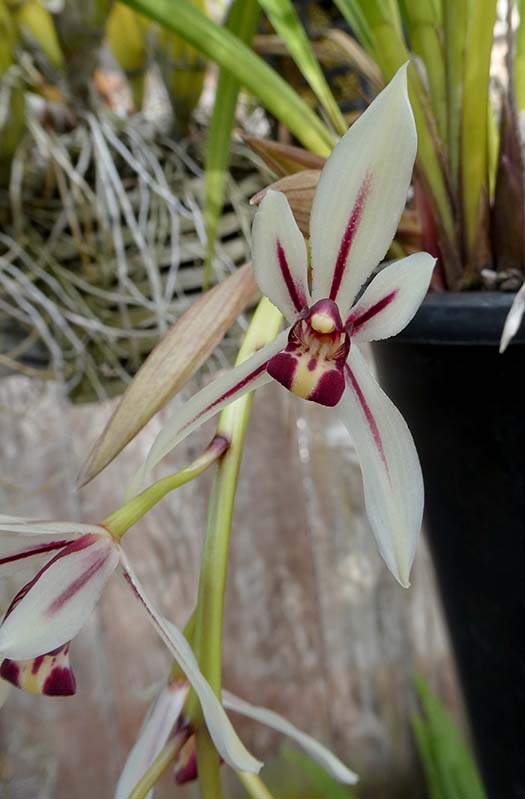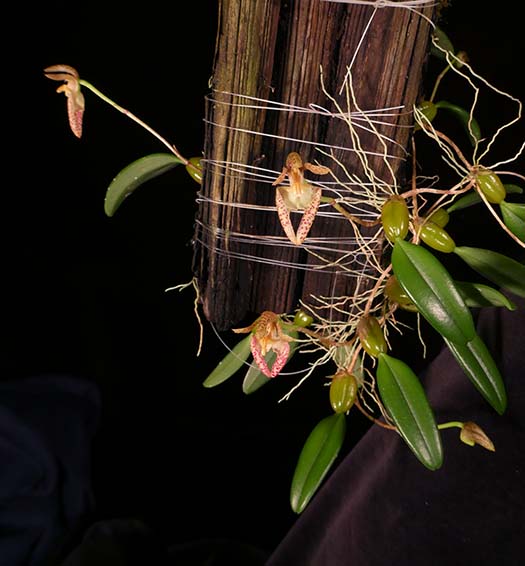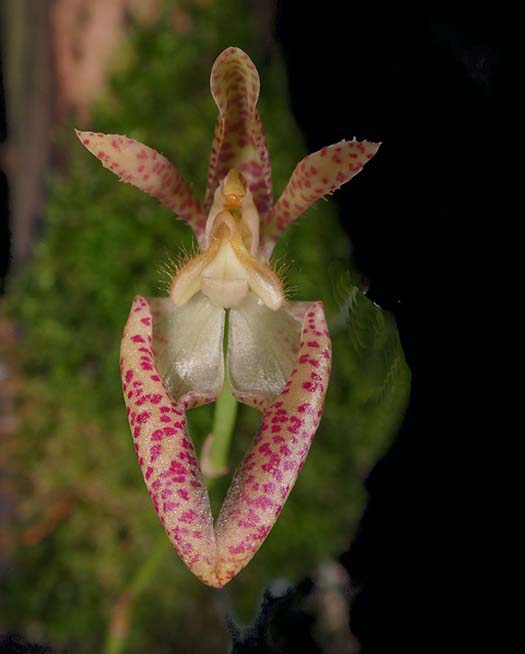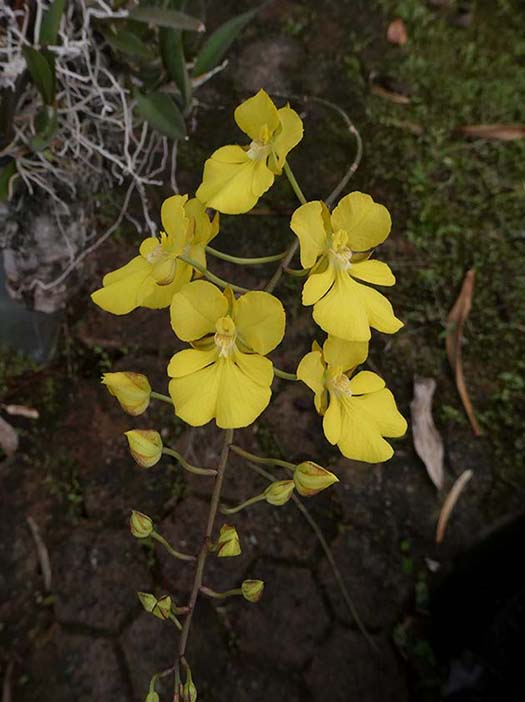January 2023
From Kurt Shanebeck:
|
|
Outdoors coastal, north of Los Angeles: |
|
Oncidium iricolorA Mexican species with long branching inflorescence. Growing mounted with moderate light. |
|
Trichopilia fragransGrowing potted in bark. Shady and moist. |
|
From Scott McGregor:All orchids grown outdoors, coastal southern California |
|
Dendrochilum saccolabiumA reliable bloomer and vigorous outdoor grower. |
|
Coelogyne mooreanaA pretty and fragrant species that grows up to about 18” tall, but stays compact. Got a bit of storm damage to the flowers this year. |
|
From Roberta Fox:
|
|
Outside in the Back Yard: |
|
I think that this is the largest variety of Mexican Laelias (they are still Laelias) that I have ever had blooming within the same month, most simultaneously and still in bloom at the end of December.We have: L. anceps, L. superbiens, L. albida, L. furfuracea, L. gouldiana, L. autumnalis and L. aurea. |
|
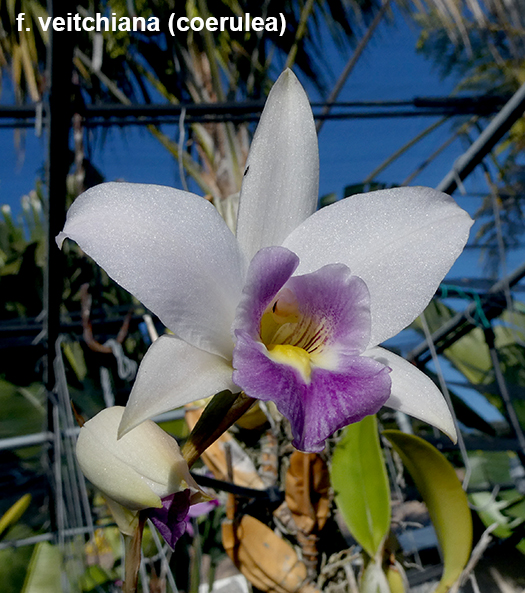 |
|
Laelia ancepsOne can't have too many L. anceps, with such a variety of color forms. Different individual plants bloom at different times, I expect to have some for at least another month. This is the ultimate bullet-proof orchid, tolerating temperatures from about 29 deg F to 110 deg F. and also rather drought-tolerant. I have found that they do best mounted or in baskets with little or no medium. |
|
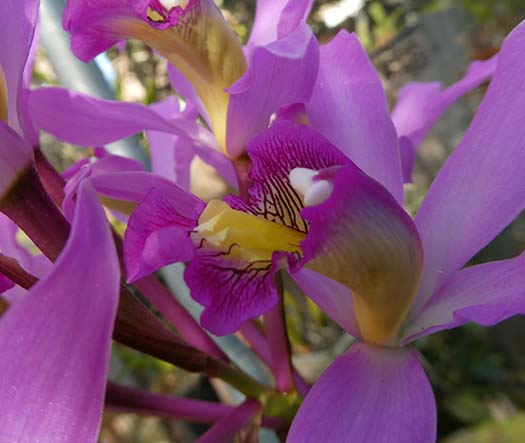 Laelia superbiensL. superbiens has long inflorescences. and tends to also have long wild roots. This one used to be Schomburgkia, characterized by "wavy" flowers. But there are two distinct groups - these with fairly slim, solid pseudobulbs were grouped with Laelias, the ones with thick, hollow psedudobulbs became Myrmecophila. |
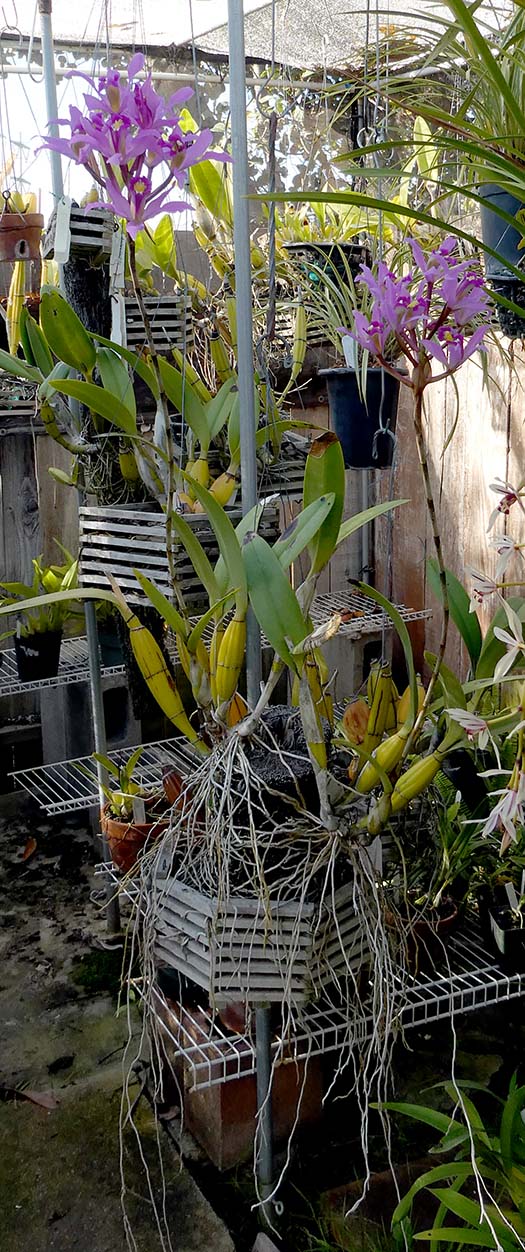 |
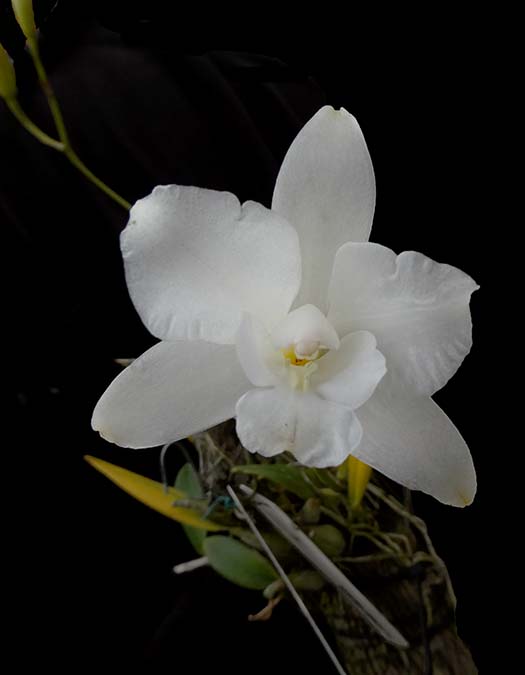 Laelia furfuracea f. alba |
|
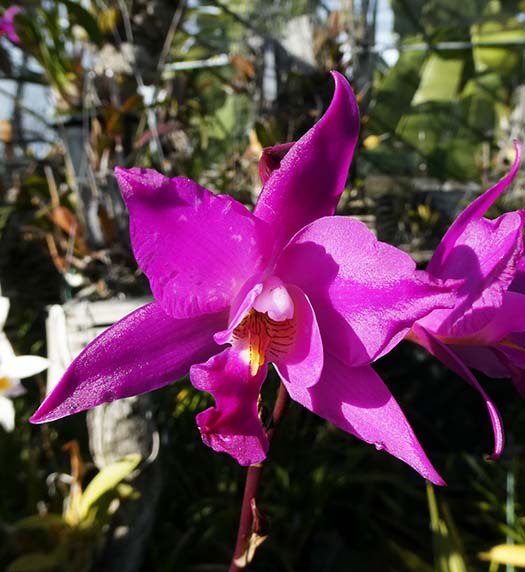
Laelia gouldianaL. gouldiana petals have a pearlescent luster in the sunlight. |
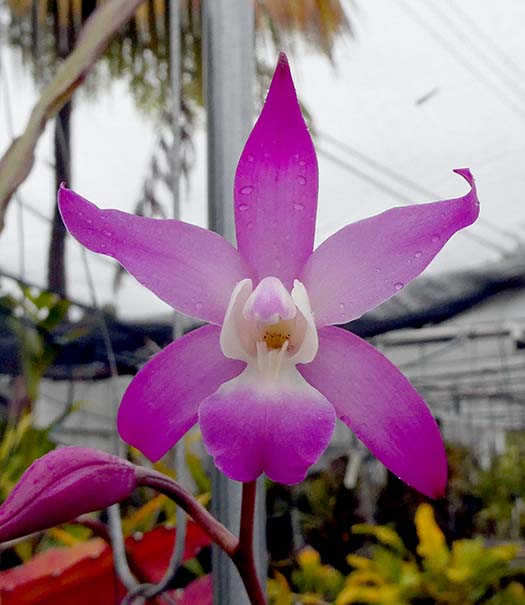
Laelia autumnalisThis one always seems to wait for winter, in spite of its name. |
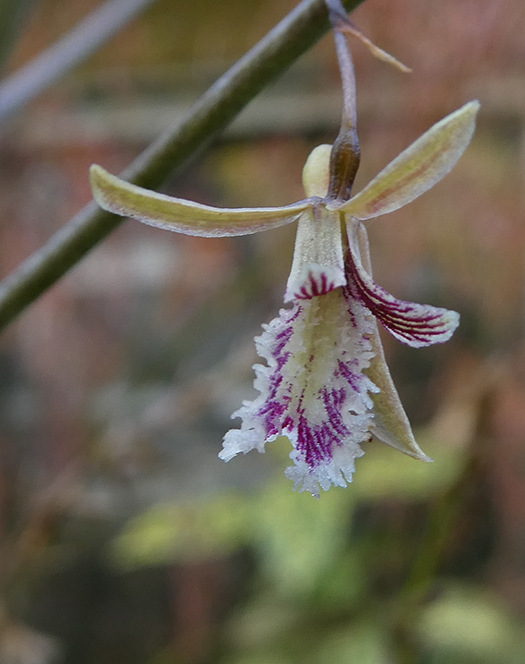 |
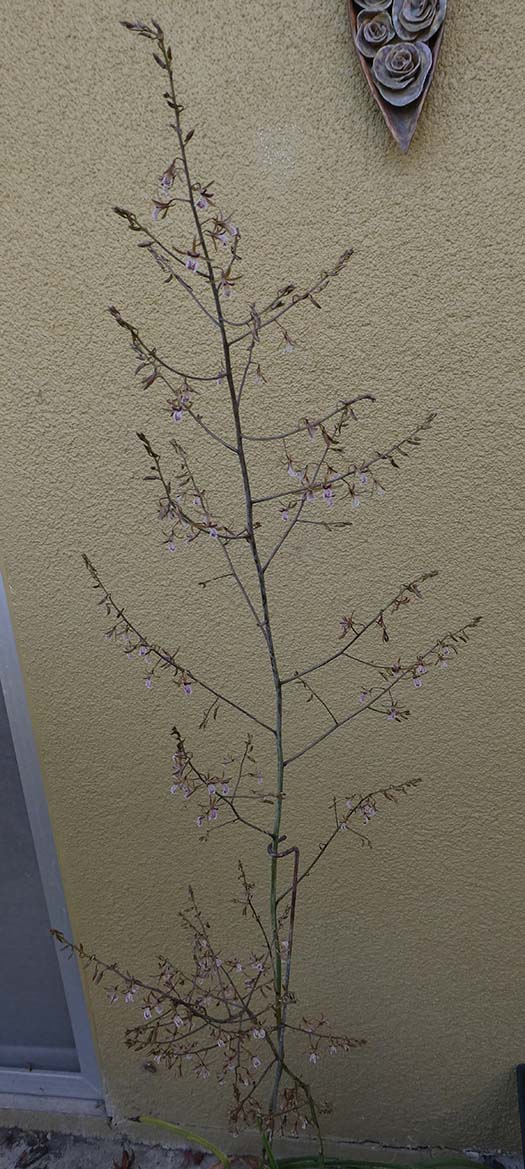 |
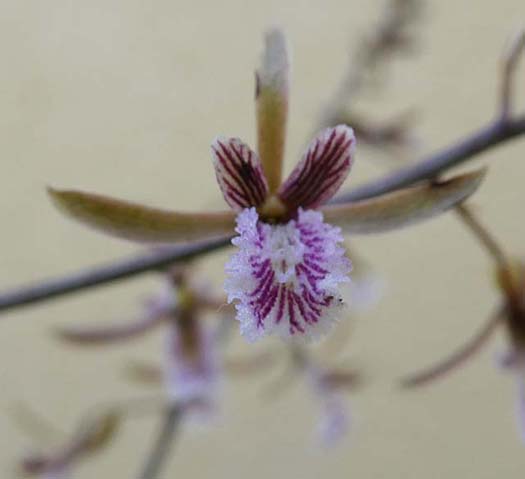 |
|
Eulophia macraNative to Madagascar from sea level to 1500 m. Before the flowers open, the spike looks barely alive, since the sepals are tan. Even once open, from a distance the blooming inflorescence is unremarkable. But look closely, these long-lasting little flowers are very beautiful. The spike is about 4 ft. tall. |
|
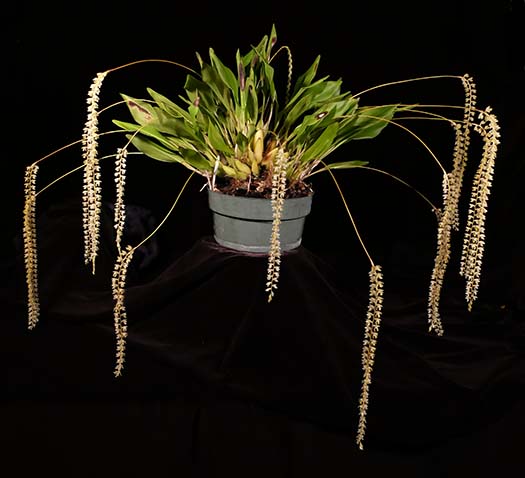
Dendrochilum cobbianumNative to the Philippines. Color is variable in the species, from yellow to white. The inflorescences with their tiny flowers look almost like strings of lace. |
|
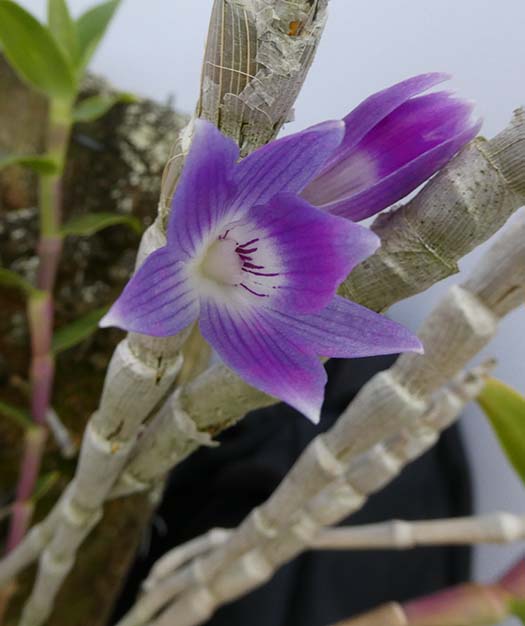 Dendrobium victoriae-reginaeNative to the Philippines, elevation 1300-2650 m. It can bloom repeadedly from bare canes, and bloom 2-3 times a year. This species does tend to want good water - mine is growing much better since I started using RO water.
|
|
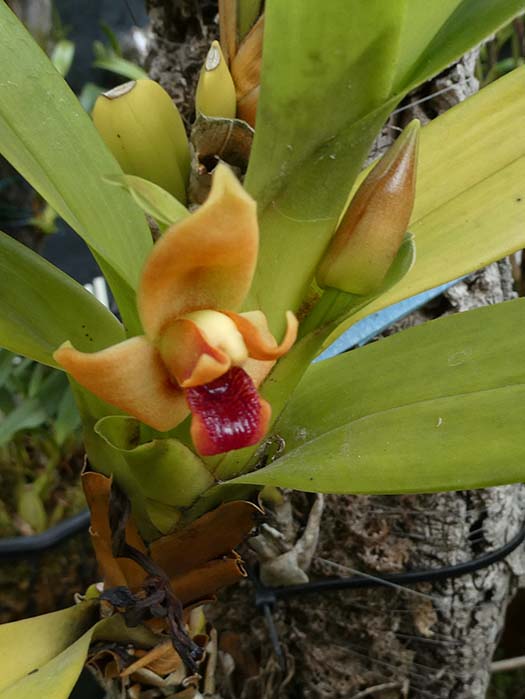
Maxillaria elatiorNative to southern Mexico and much of Central America. It blooms severa times a year, producing flowers sequentially. Since the flowers have heavy substance and are long-lasting, it can be in bloom 6 weeks or more each time it blooms. |
|
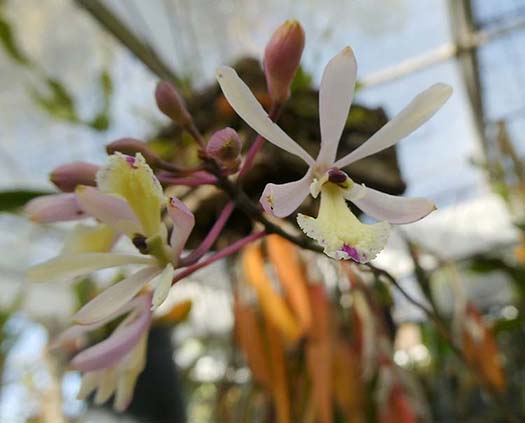 |
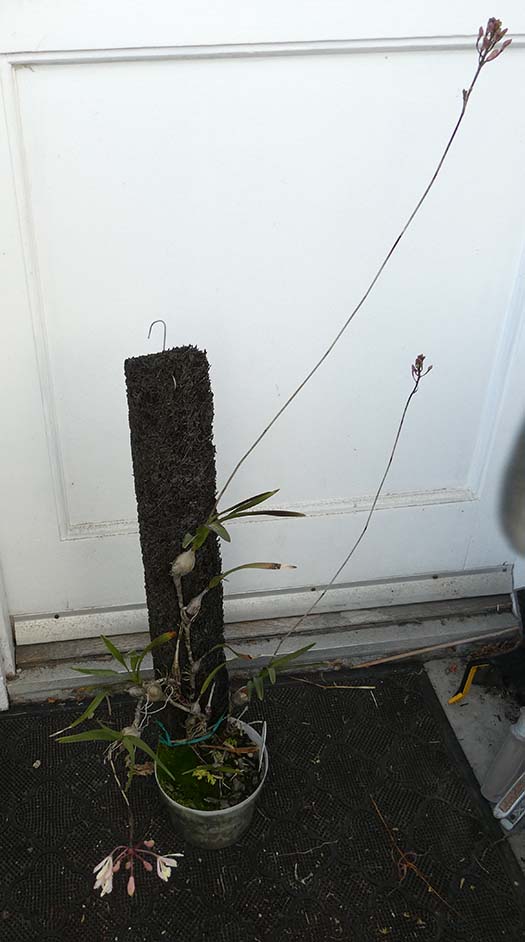 Pseudolaelia freyiFound in Espirito Santo state in Brazil, at elevations from 1100 to 1400 m. It grows on Vellozia bushes - and is happily climbing up this hapu'u plaque. |
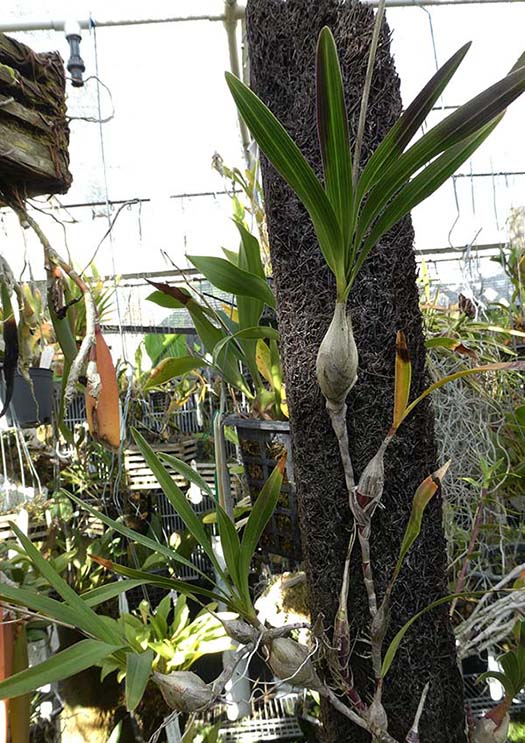 |
|
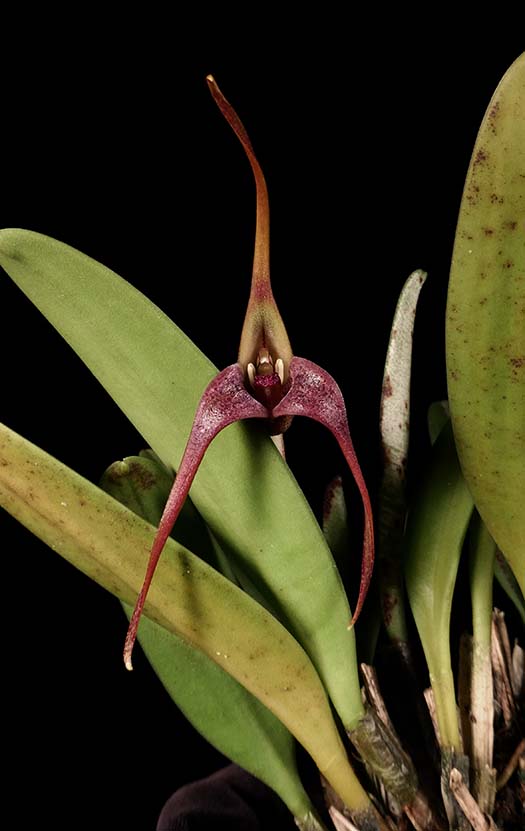 |
|
Masdevallia colossusFlower is about 3 inches, with very heavy substance. Nice flower-to-plant ratio. Native to Peru and Ecuador. |
|
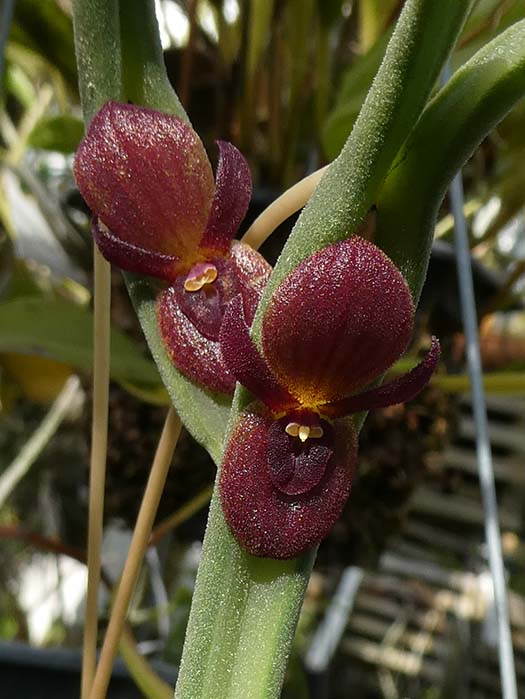
Pleurothallis dilemmaProduces multiple flowers sequentially from a leaf. The leaves remind me a bit of green beans. Native to Ecuador. |
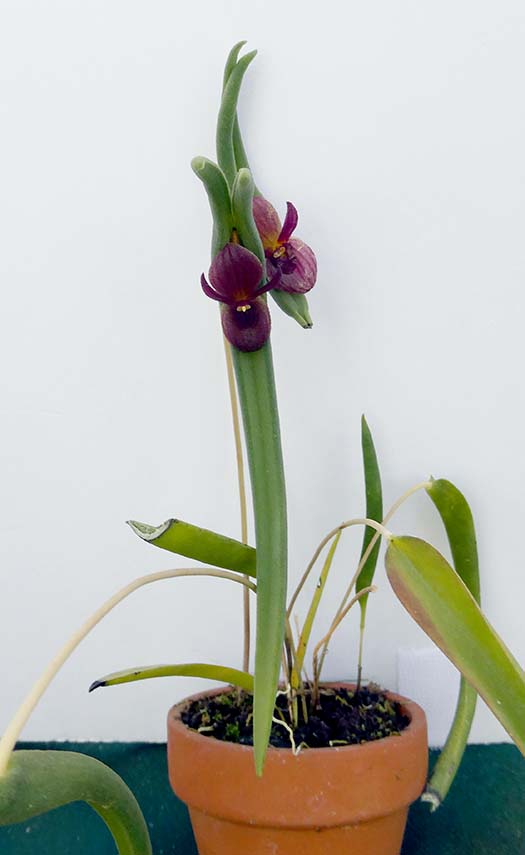 |
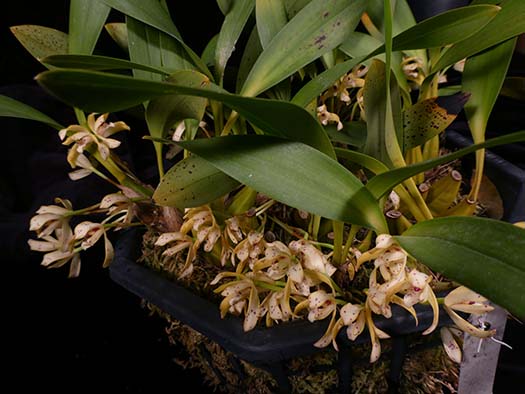 Maxillaria ubatubanaSuper-floriferous! Native to southeastern Brazil (named for the city of Ubatuba). |
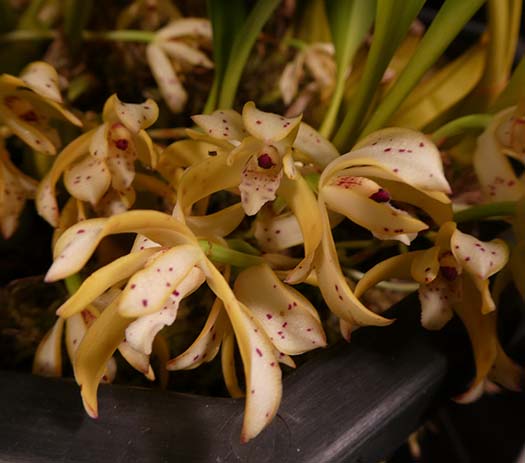 |
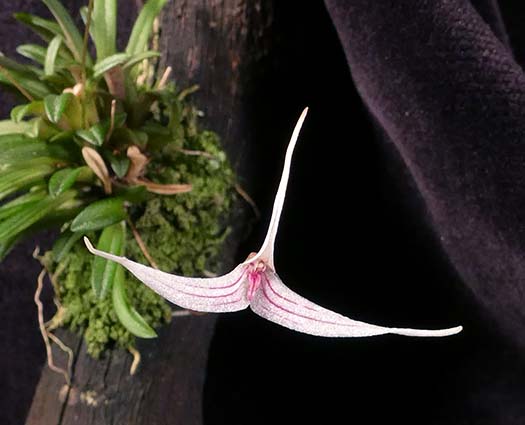 |
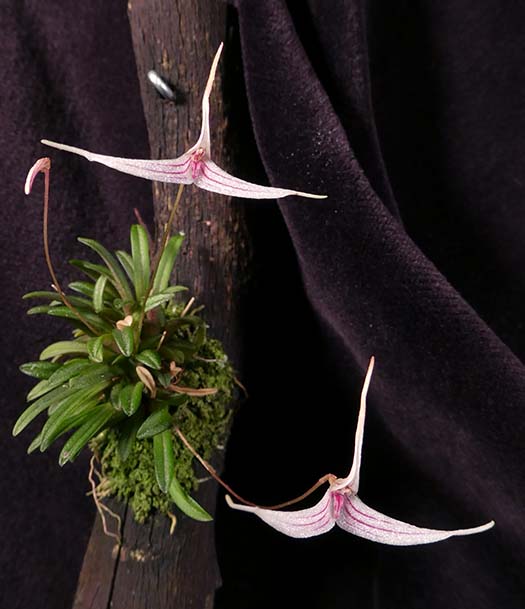
Trisetella hoeijeriLike little birds. Flowers are relatively large for the genus. Two of the flowers opened together, and the third (bottom right) opened as the other two were fading. The third one has a distinctly darker dorsal sepal. It's possible that there are actually two plants in this little (1.5 inch) clump. These need to be cool and damp. |
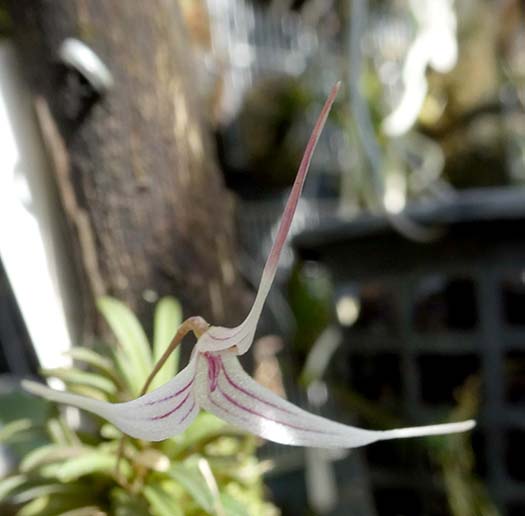 |
|
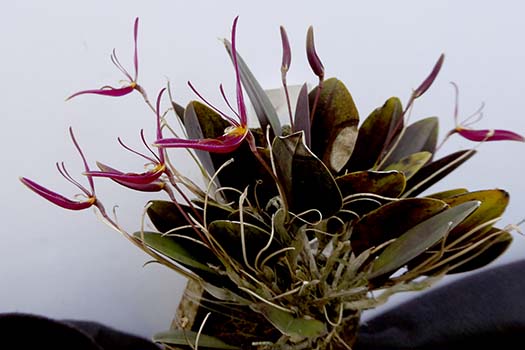 Restrepia condorensisThis plant is almost never NOT in bloom, but this was a particularly nice flush bloom. |
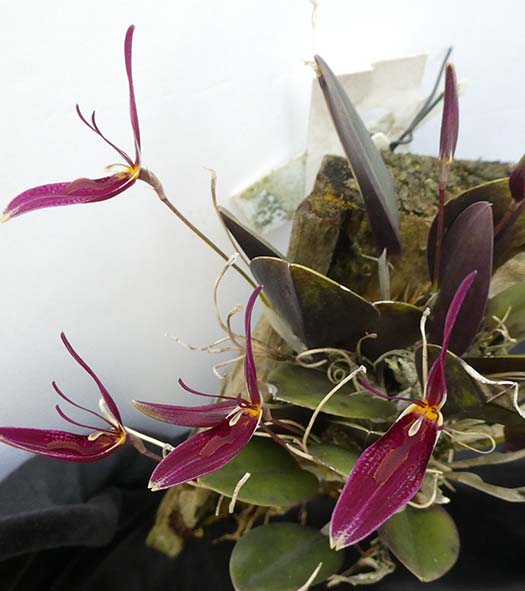 |
In the greenhouse... |
|
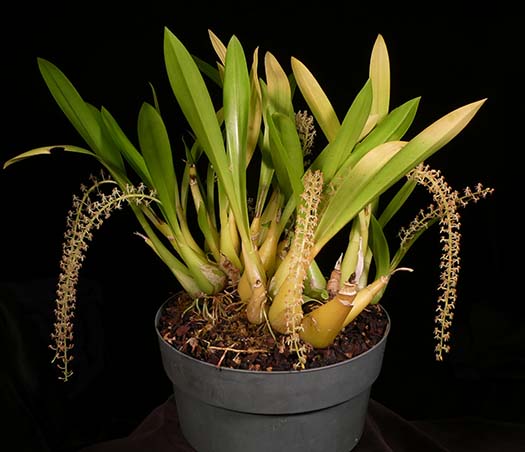 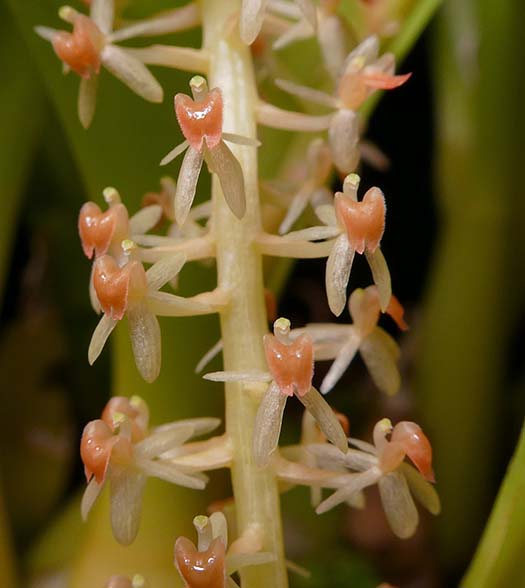 |
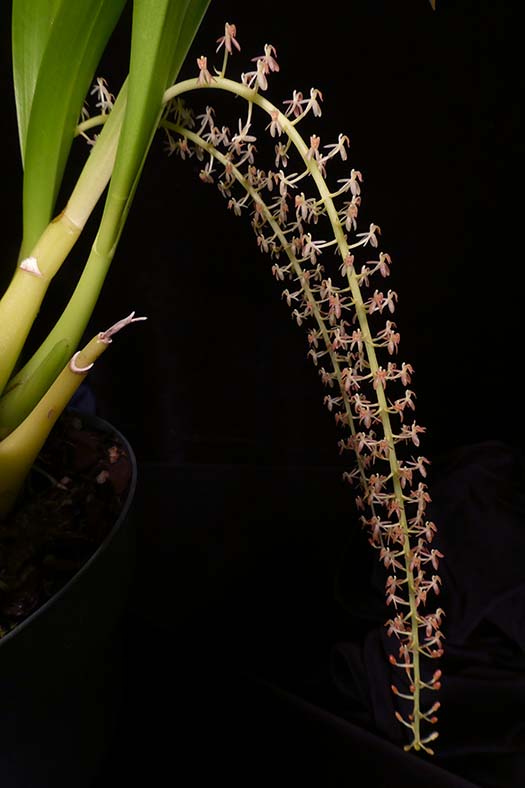
Liparis parvifloraNative to a wide range of Pacific islands and adjoining mainland, including Philippines, Borneo, Malaya, and Thailand, at a range of elevations from sea level to 2000 m. I have been growing in the greenhouse where it does very well, but the elevation range indicates that it could grow outside. The mass of tiny flowers produces inflorescences that look like lace. |
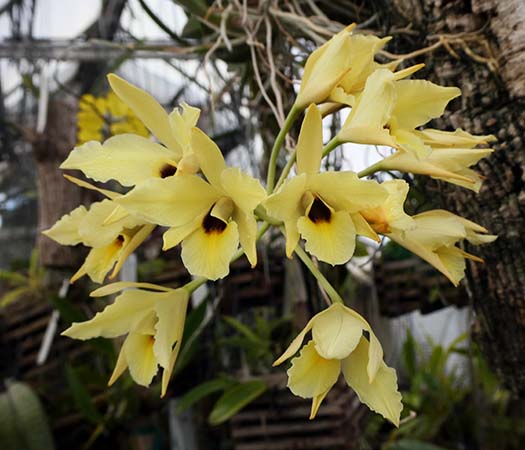
Laelia aureaNative to northwest Mexico, endemic to the Pacific-facing foothills. It grows at lower elevations, 100-300 m. It is closely related to L. rubescens, but comes from a much warmer area. |
|
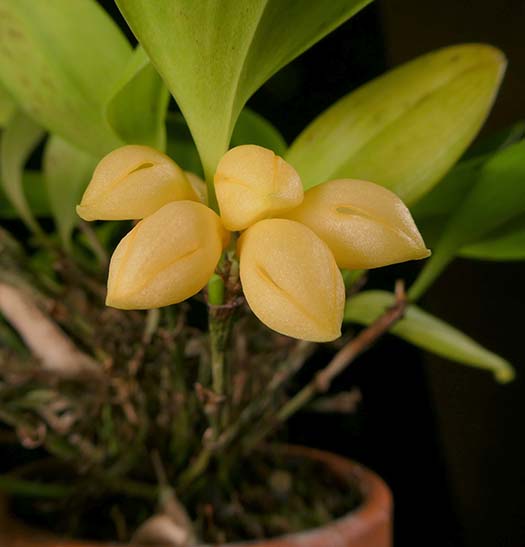
Zootrophion alvaroiNative to Colombia and Ecuador. The flowers remind me of little balloons, or maybe lanterns. This is as open as they get, so the polinator must be VERY little. This is the biggest cluster of flowers that I have had from this plant, usually it is 1, 2 or 3 flowers on an inflorescence. |
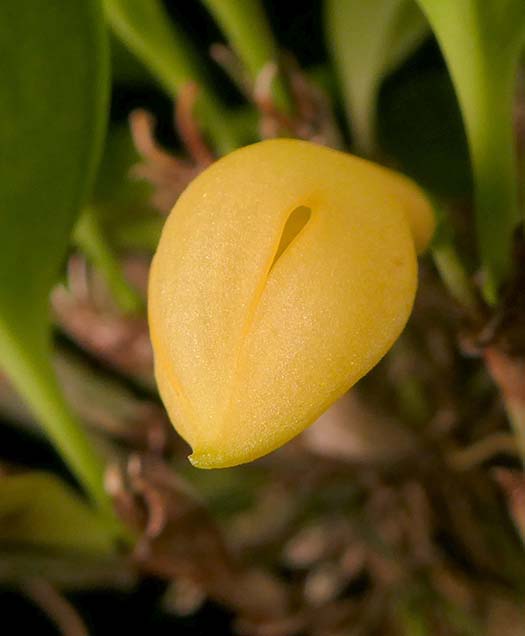 |
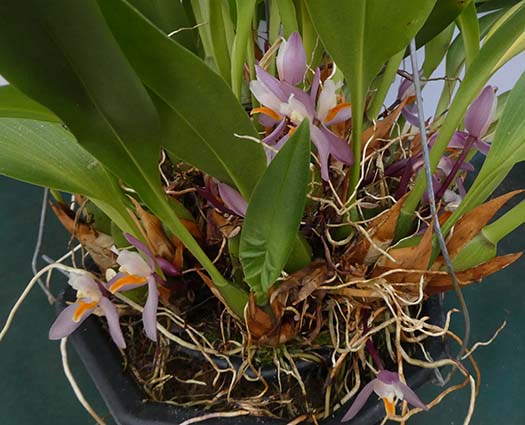
Maxillaria richiiA rather unusual color combination - the sepals are a soft dusty rose that contrasts with the intense yellow lip. Native to Ecuador, elevation 100-1000 m. It blooms 2 or 3 time a year and as the plant gets bigger, the blooms are becoming more profuse. |
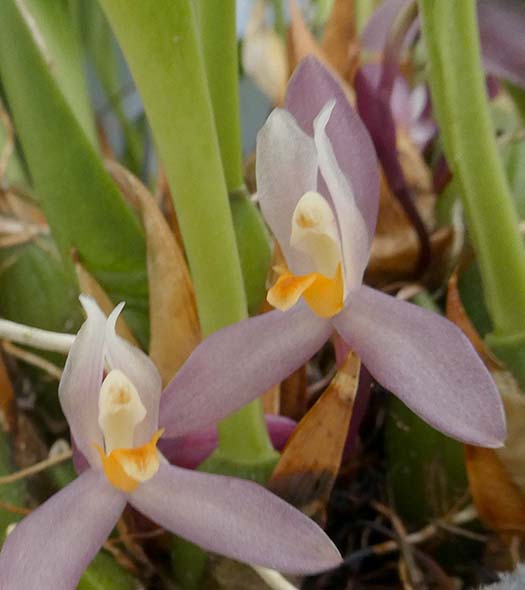 |
